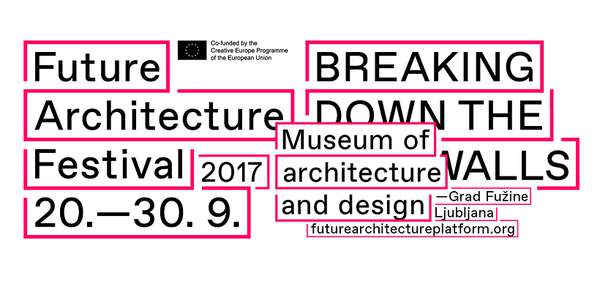Idea by
Gaja Mežnarić Osole & Andrej Koruza
Call for ideas 2017
Symbiocene
Symbiocene
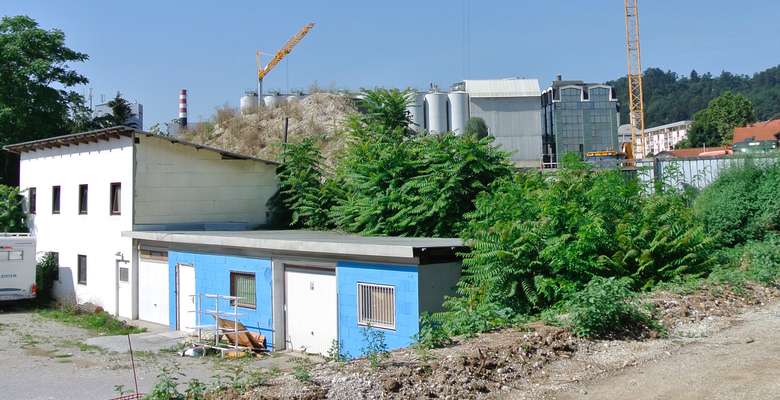
The project is a practical exploration of the complex interspecies dynamics in present urban ecosystems. It takes the problem of dominant invasive plants as a reflection of globalised capitalist economy. With their overruling natures, these monocultures displace native species and weaken the resilience of ecosystems.
It's time humans recognise the synergic interconnectedness among species as a necessity in sustaining desired conditions for life on Earth. Authors propose a series of urban beehives made from the wood of invasive trees as an invitation to a new era - symbiocene. Thus created synergies among human and more-than-human actors (bees, humans & invasive plants) can become a showcase for negotiating competitive relations into symbiotic. To overcome capitalist, anthropocentric perspectives on economy, urbanisation and nature, the beehives serve as a critical tool for questioning how and with whom to collaborate to build a diverse web of life and exchange in our future cities.
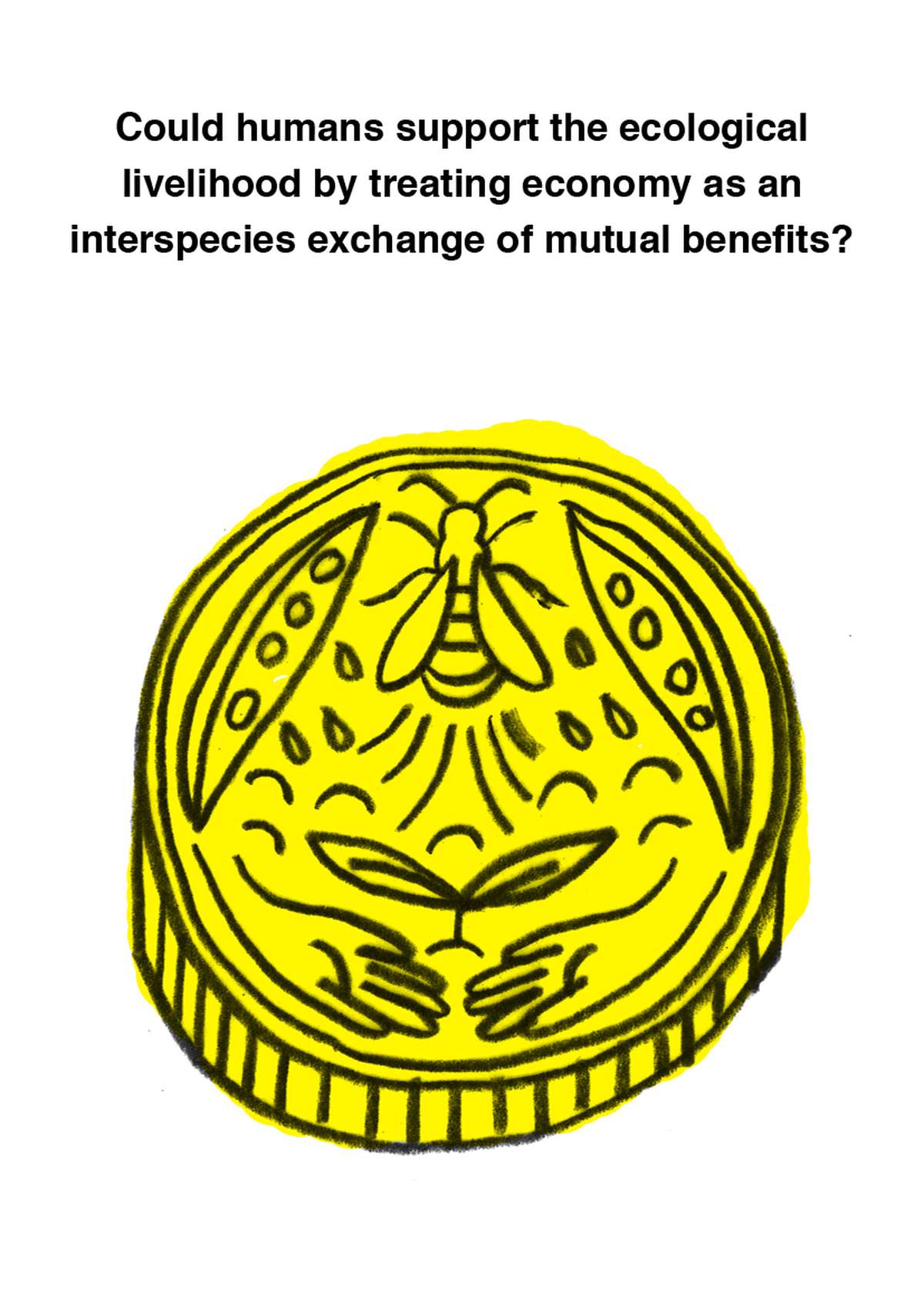
Perceiving economy as a way of organising nature
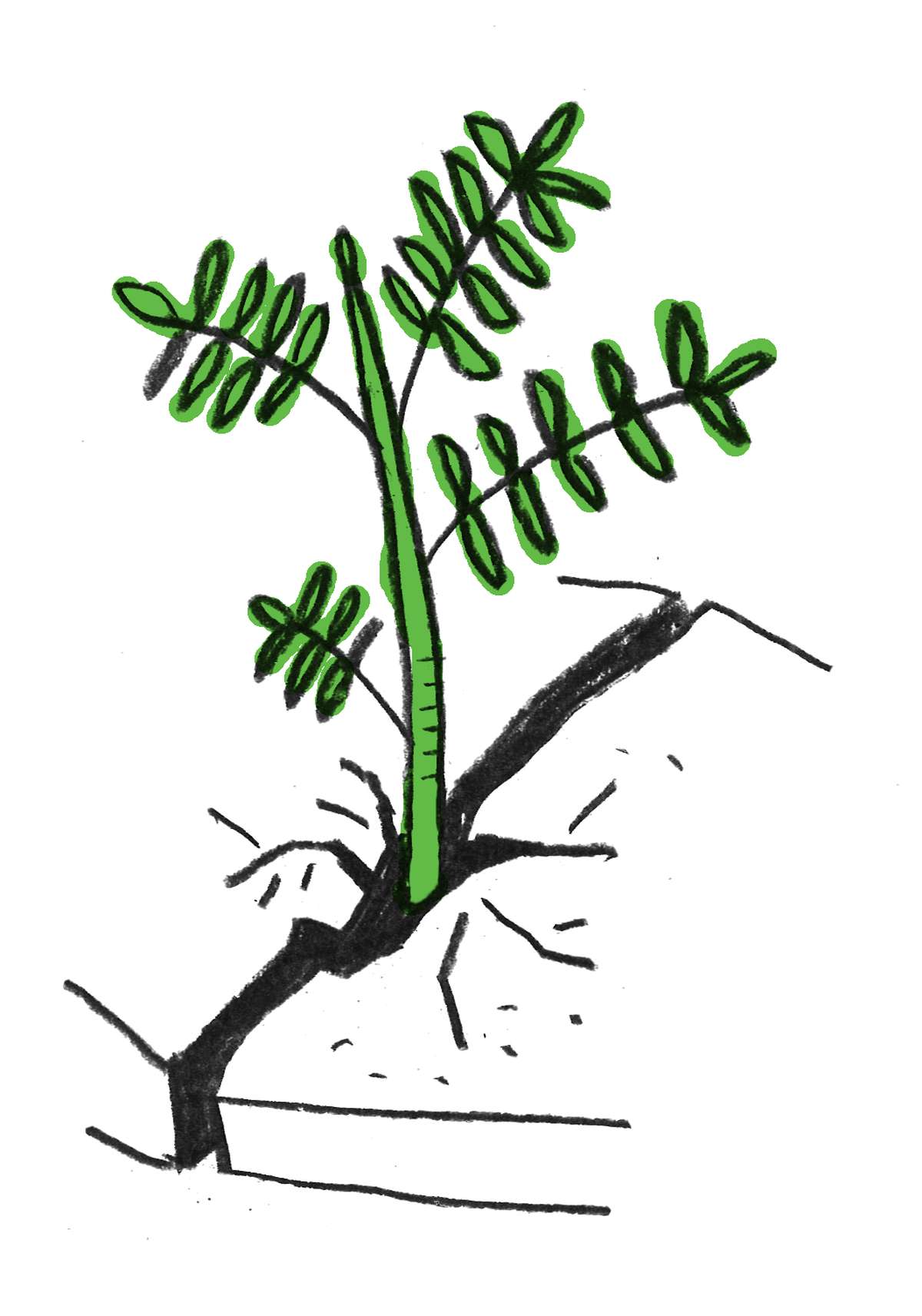
Deconstructing urbanisation
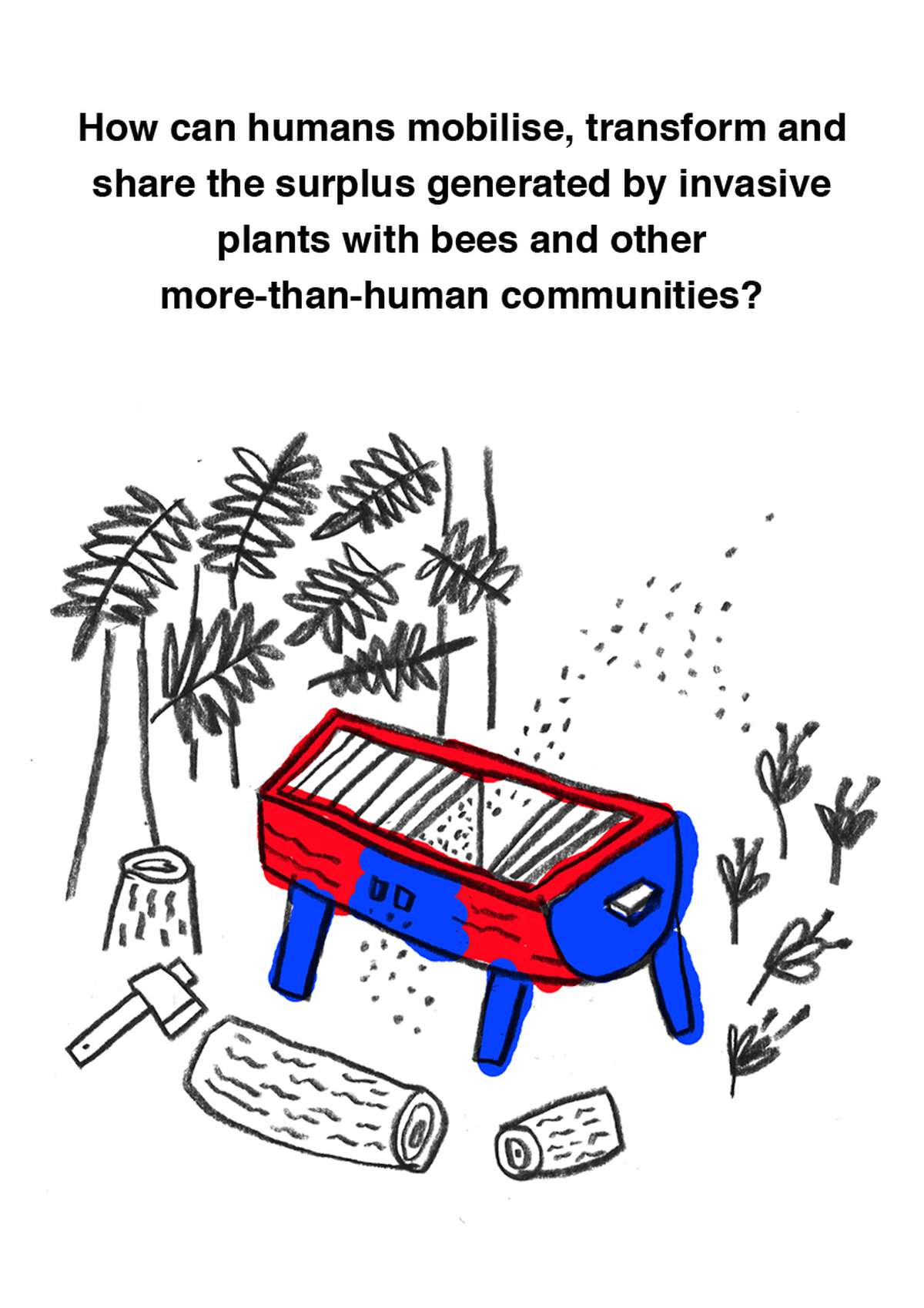
Mobilising surplus of nature’s hyperproduction
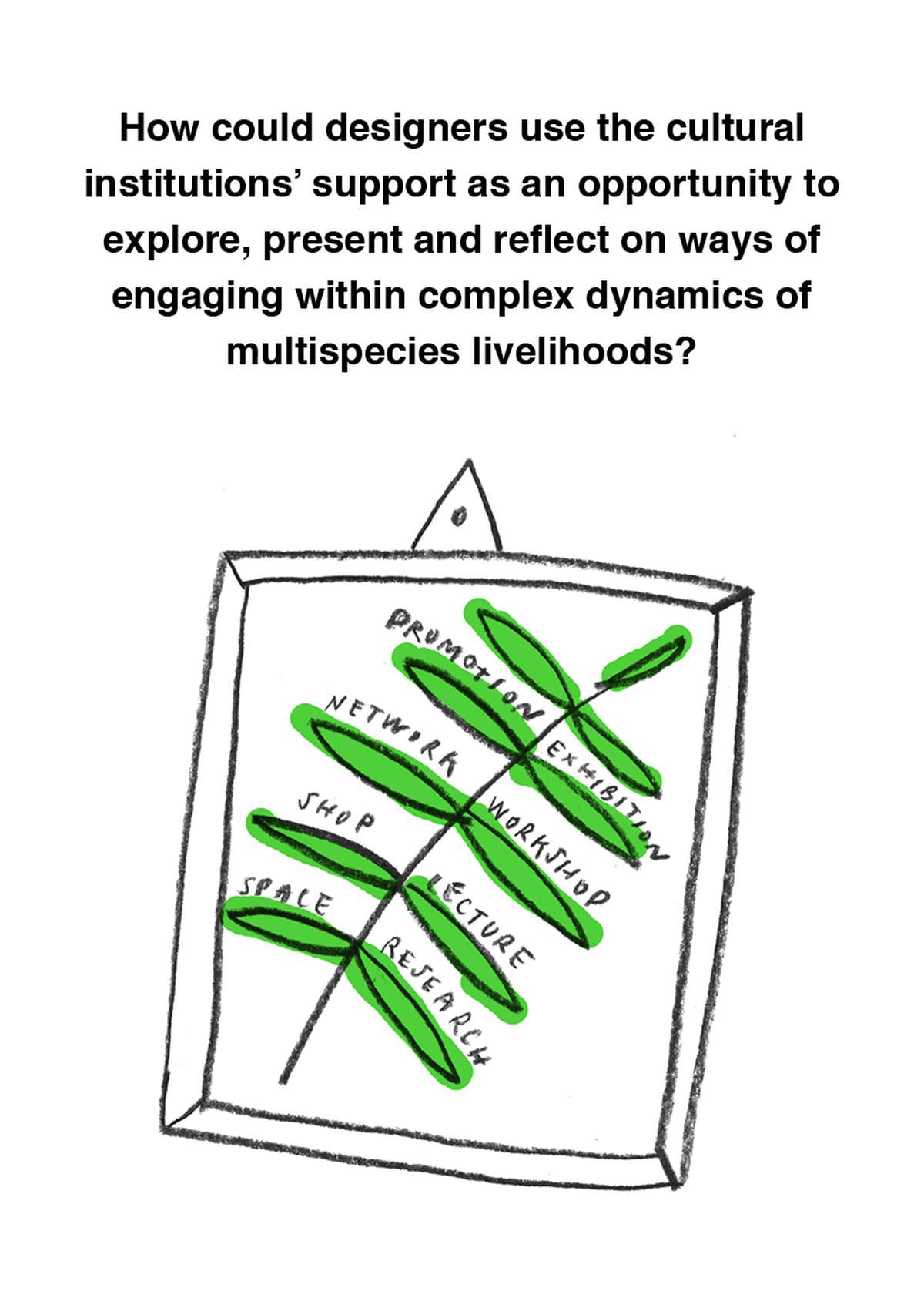
Activating spaces of interspecies learning
Symbiocene
Symbiocene

The project is a practical exploration of the complex interspecies dynamics in present urban ecosystems. It takes the problem of dominant invasive plants as a reflection of globalised capitalist economy. With their overruling natures, these monocultures displace native species and weaken the resilience of ecosystems.
It's time humans recognise the synergic interconnectedness among species as a necessity in sustaining desired conditions for life on Earth. Authors propose a series of urban beehives made from the wood of invasive trees as an invitation to a new era - symbiocene. Thus created synergies among human and more-than-human actors (bees, humans & invasive plants) can become a showcase for negotiating competitive relations into symbiotic. To overcome capitalist, anthropocentric perspectives on economy, urbanisation and nature, the beehives serve as a critical tool for questioning how and with whom to collaborate to build a diverse web of life and exchange in our future cities.
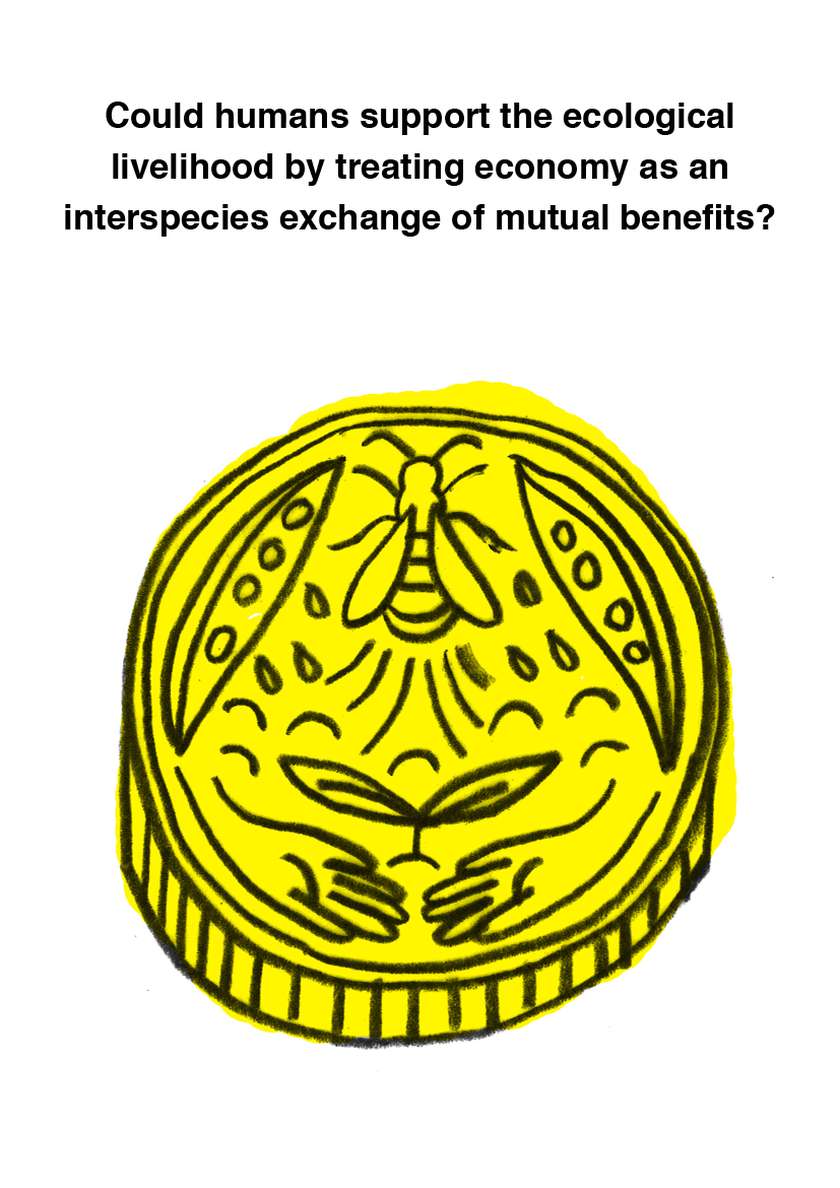
Perceiving economy as a way of organising nature
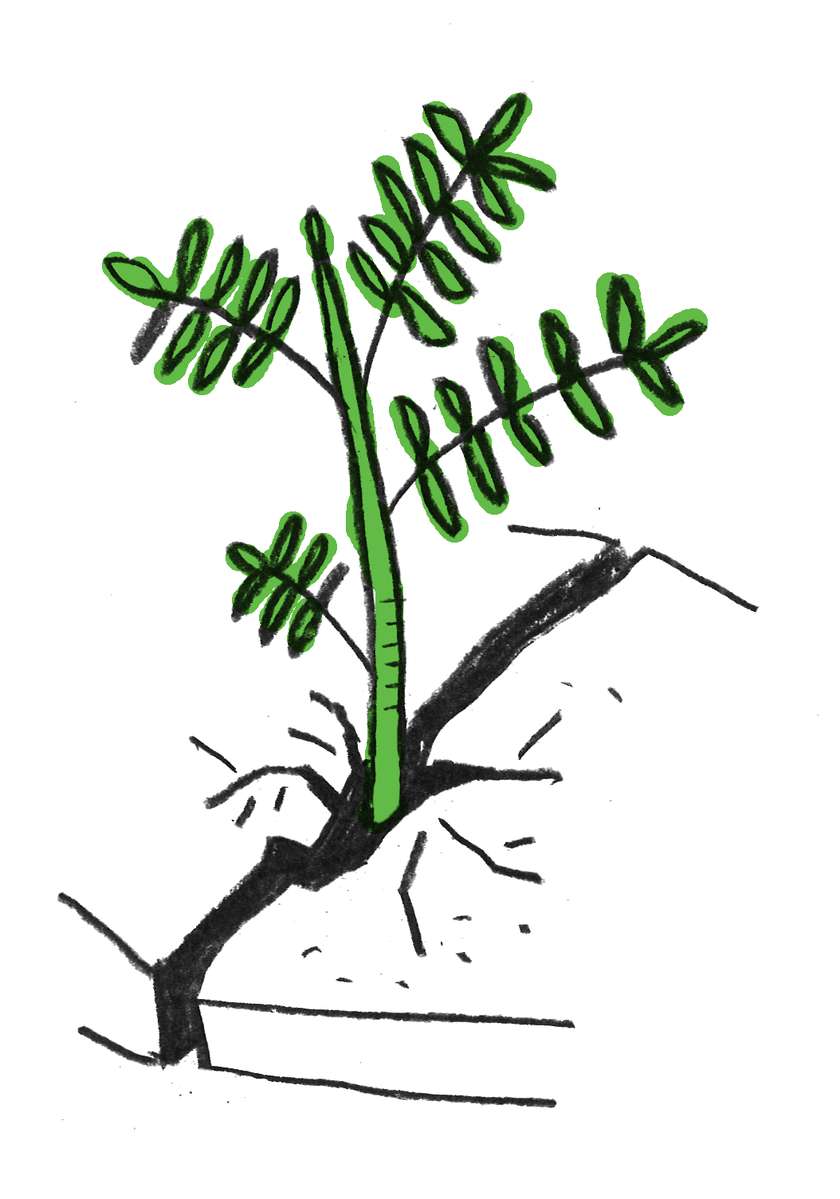
Deconstructing urbanisation
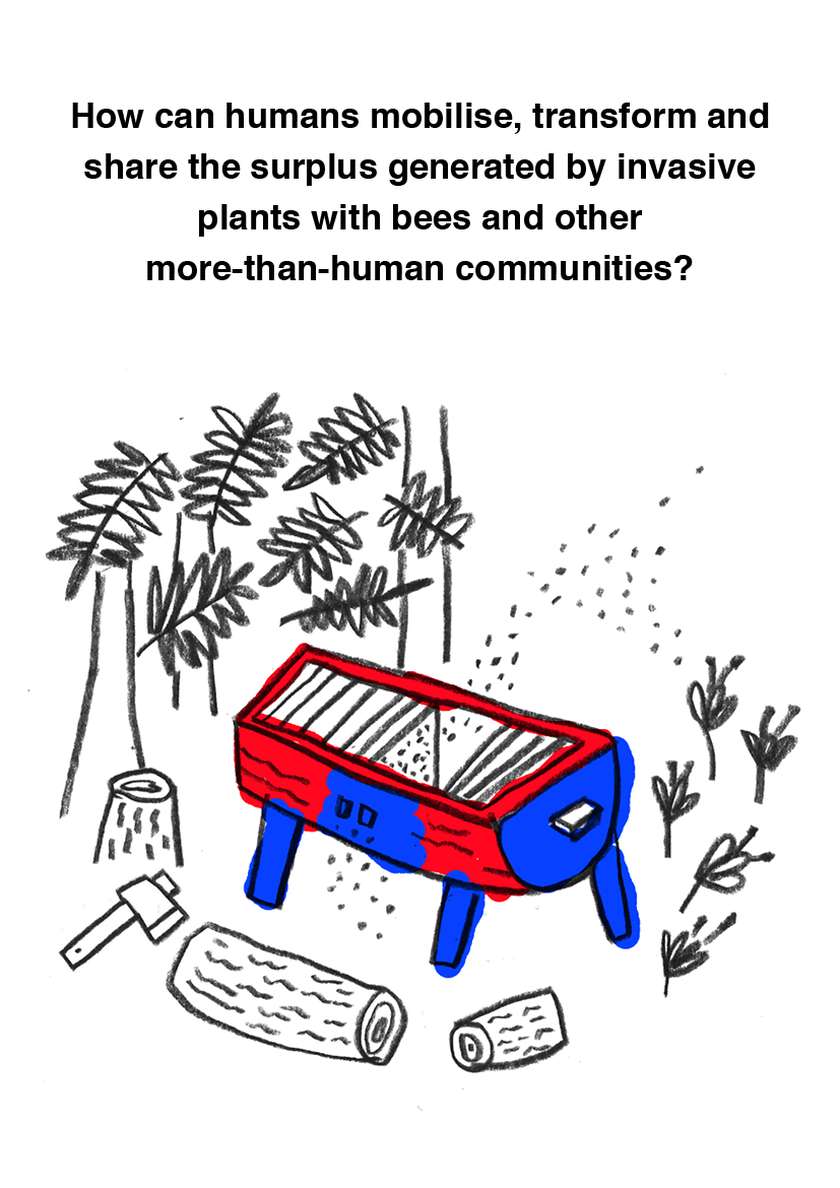
Mobilising surplus of nature’s hyperproduction
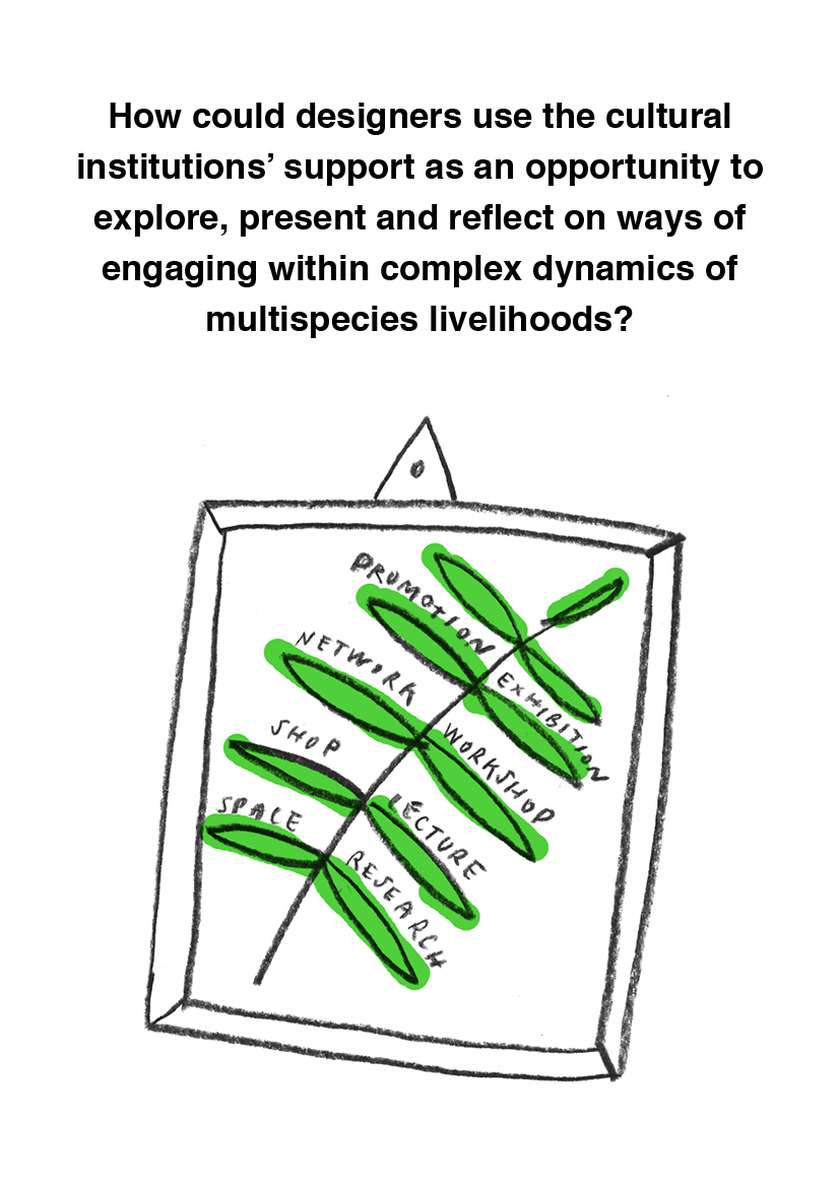
Activating spaces of interspecies learning
